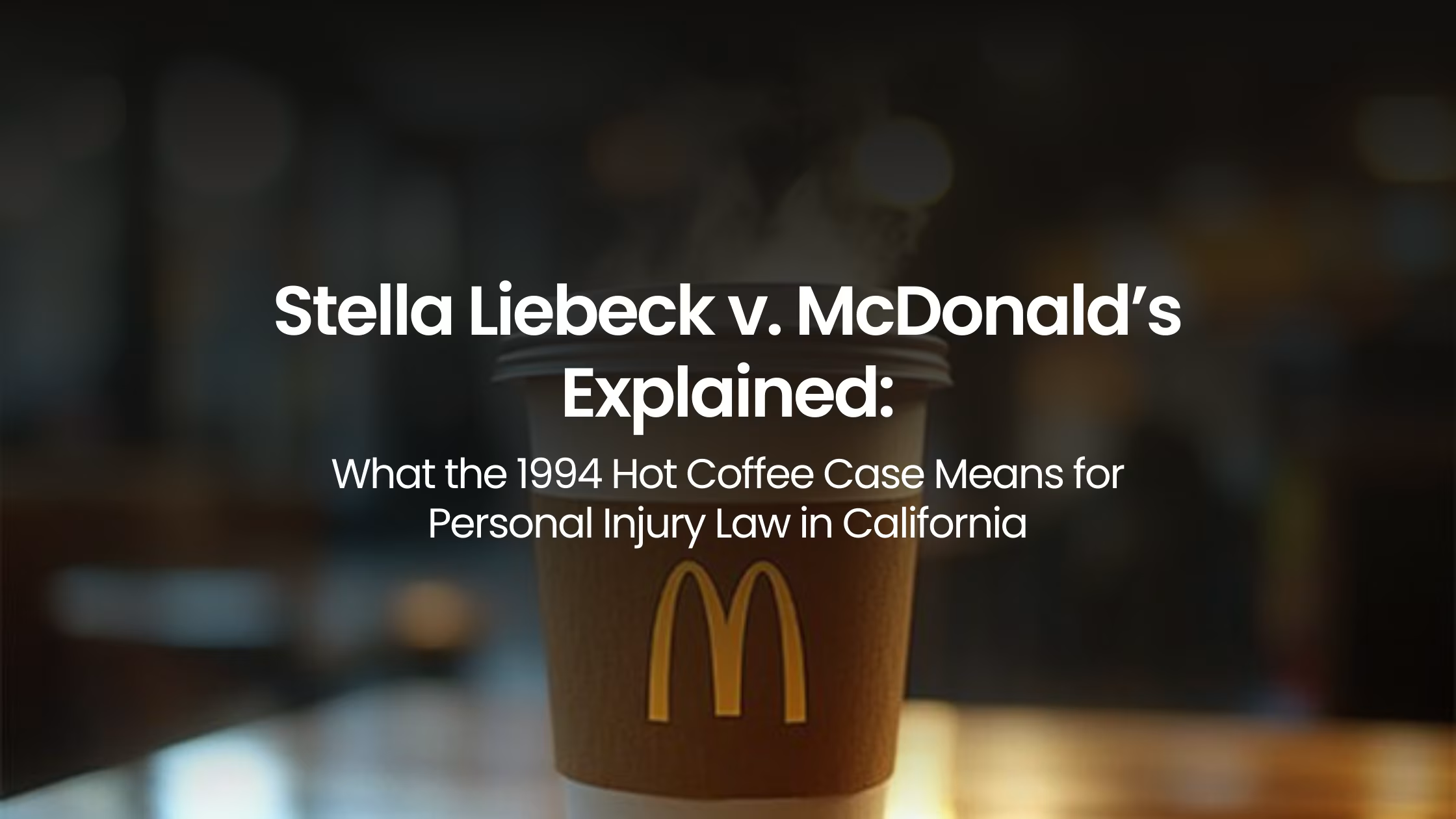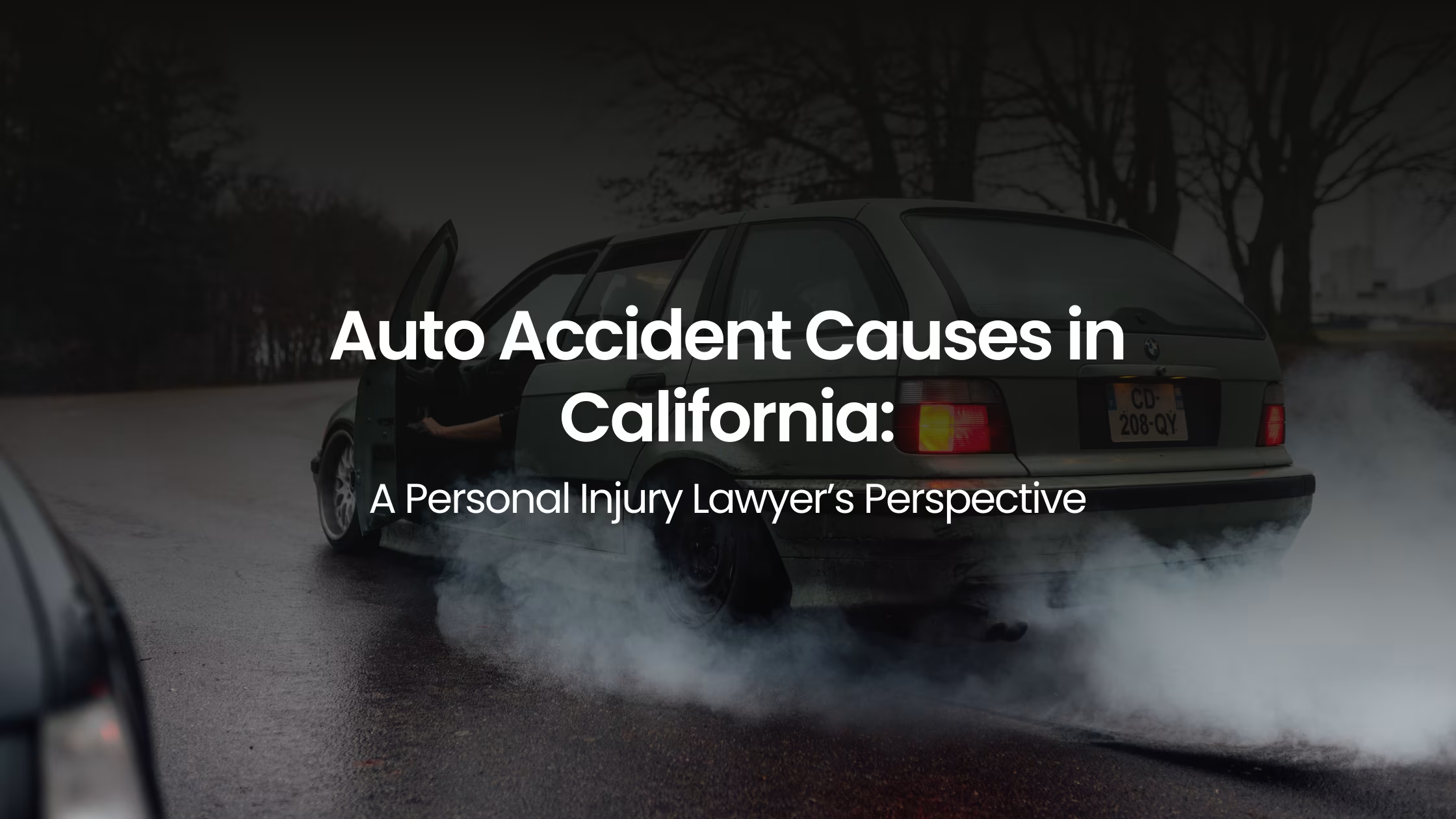When most people hear about the McDonald’s hot coffee lawsuit, they remember headlines mocking a woman who sued over spilled coffee. But the 1994 case of Stella Liebeck v. McDonald's Restaurants was far more than a frivolous lawsuit. It sparked serious legal and ethical debates and changed the landscape of personal injury law in California and beyond.
As a reputed law firm specialized in personal injury, with over 25 years of real courtroom experience, we want to break down the real story behind the case, the key legal takeaways, and how it still influences personal injury cases today.
What Actually Happened: The Real Story of the Hot Coffee Case
Stella Liebeck, a 79-year-old woman from Albuquerque, New Mexico, was in the passenger seat of her grandson's parked car when the incident occurred. After purchasing a 49-cent cup of coffee from a McDonald’s drive-thru, she attempted to add cream and sugar by placing the cup between her knees. In doing so, the entire cup spilled into her lap.
But this wasn’t just a mild burn. The coffee, served at 180 to 190 degrees Fahrenheit, caused third-degree burns on 16% of her body, including her inner thighs, buttocks, and groin area. She was hospitalized for eight days, underwent skin grafts, and required two years of medical treatment. The total medical costs exceeded $20,000.
Visual Overview: Stella Liebeck’s Injuries
The Lawsuit: Liebeck v. McDonald's Restaurants
Initially, Liebeck only asked McDonald’s to cover her medical expenses, but the company offered a mere $800. She then filed a product liability and negligence lawsuit, alleging that the coffee was unreasonably dangerous and served at a temperature far hotter than necessary.
McDonald’s Knew the Risk
Evidence presented in court revealed that:
- McDonald’s had received over 700 prior complaints of similar burns.
- The company had internal guidelines acknowledging the risk but chose not to lower the temperature.
- A McDonald’s quality assurance manager admitted the coffee was not safe for immediate consumption.
The Verdict: A Wake-Up Call for Corporations
The jury awarded Stella Liebeck $200,000 in compensatory damages, reduced to $160,000 due to comparative negligence (she was deemed 20% at fault). But the shock came in the form of $2.7 million in punitive damages, roughly two days worth of McDonald’s coffee sales at the time.
Eventually, the punitive damages were reduced to $480,000, and the case settled out of court for an undisclosed amount, reportedly under $600,000.
Breakdown of Awarded Damages
Why This Case Still Matters in California Today
The Liebeck case is a foundational example in California personal injury law of how courts assess negligence, damages, and corporate accountability. Here are the lasting takeaways:
1. Dangerous Products Must Be Warned Against
In California, under strict liability, a company can be held responsible if a product is found to be unreasonably dangerous. McDonald’s failure to provide adequate warnings or adjust unsafe practices was pivotal.
2. Comparative Fault Doesn’t Bar Recovery
Even though Liebeck was partially at fault, she still received compensation. This is aligned with California’s comparative negligence rules, where injured victims can recover damages even if they are partially responsible.
3. Punitive Damages as Deterrents
The high punitive damages emphasized that large corporations must take public safety seriously. In California, punitive damages are allowed when a defendant acts with oppression, fraud, or malice.
Our Legal Perspective as California Trial Lawyers
As a personal injury attorney in San Francisco with real courtroom experience, I can say this: most people underestimate their injuries, and corporations often rely on this. The Liebeck case is a cautionary tale. It reminds us that victims have a right to fight back and that we, as lawyers, must be willing to take cases to trial—not just settle.
At LADVA LAW, we don’t shy away from trials. With over 25 years of experience, we serve clients across northern California, helping them navigate complex personal injury claims and hold negligent parties accountable.
How This Case Helps Modern Victims of Burn Injuries and Negligence
Victims of severe burn injuries, product liability accidents, or corporate negligence in California can reference the Liebeck case as an example of:
- The court acknowledging the seriousness of non-visible injuries
- The importance of documented medical care and expert testimony
- How corporations are expected to foresee potential harm
Whether you’ve suffered from defective electronics, unsafe food and drink products, or lack of proper warnings, this case demonstrates how you can pursue compensation for physical, emotional, and financial damages.
Real Case Parallels in California
- A Bay Area man won damages after suffering second-degree burns from a vape pen explosion in 2021.
- A woman in Los Angeles received compensation for chemical burns caused by mislabeled beauty products.
Final Thoughts: What You Need to Know if You’re Hurt by Negligence
The Stella Liebeck case shows how even a simple cup of coffee can cause life-altering injuries if proper care isn’t taken. And more importantly, it shows how the legal system can work for ordinary people.
If you’ve been hurt due to a company’s negligence in California, don’t assume your case is “small”
At LADVA LAW, we treat every case with the same attention we would if it were going to a jury trial. Unlike many firms, our attorneys are seasoned litigators who fight to get real results.
Need Legal Help After a Burn or Negligence Injury?
Contact Us today for a free consultation. Whether it’s a product defect, severe burn, or corporate negligence, we know what it takes to win.





